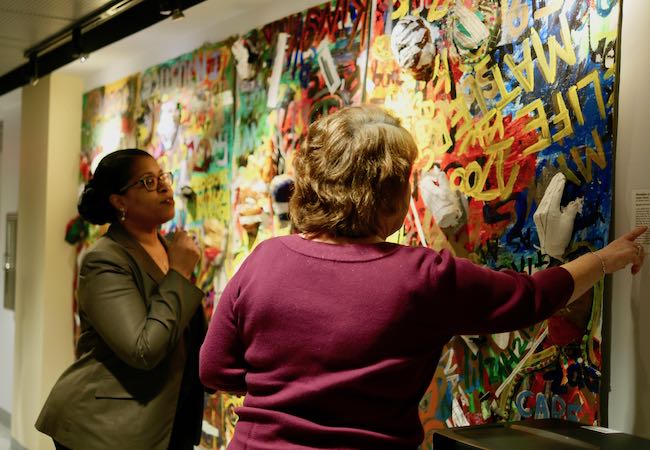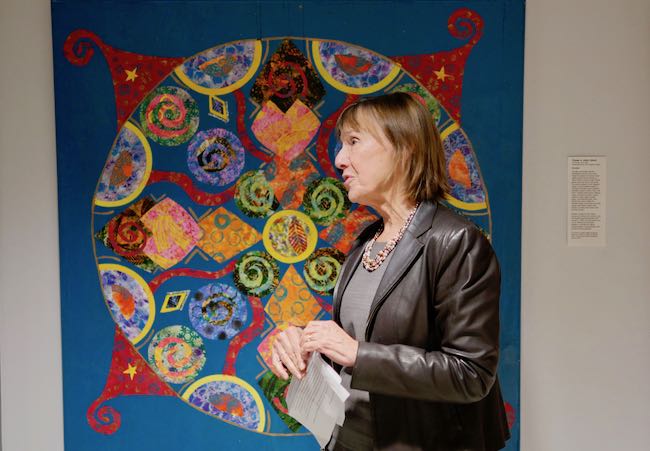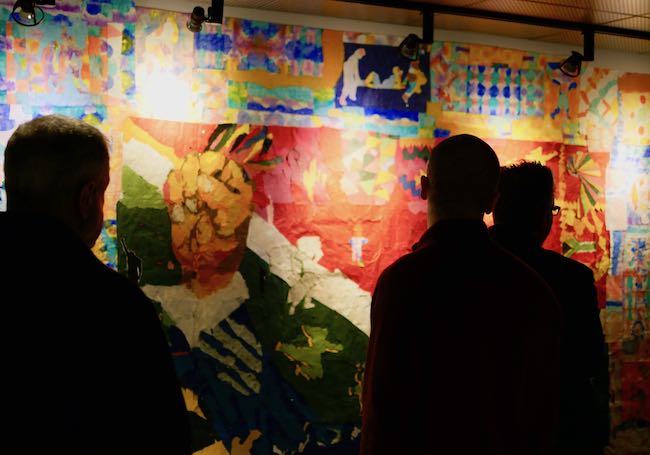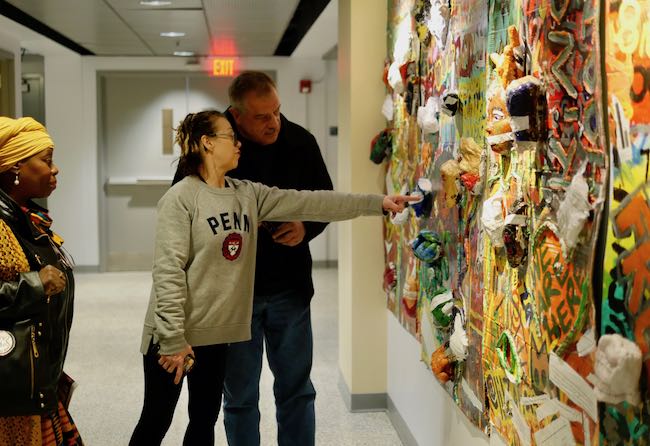Vibrant, colorful designs from Philadelphia students in entryway reflect Penn GSE’s mission

Penn GSE staffers read the description of Education Not Incarceration, which was created by students at the Juvenile Justice Center.
Last year, Penn GSE held a design sprint challenge to use design thinking to reimagine how the first floor of the Penn GSE building could be used.
A theme emerged in interviews with members of the Penn GSE community. People wanted the space to reflect the school’s work with children and its dedication to social justice.
Now it does.
On Feb. 13, artwork created by students at Strawberry Mansion High School, Chester A. Arthur School, and the Juvenile Justice Center was formally unveiled on the first floor.

“One of the things brought me to Philadelphia was Penn GSE’s commitment to the School District of Philadelphia, and the work that so many of our students, faculty, and staff do in the schools,” Penn GSE Dean Pam Grossman said. “Having our mission as a school of education, our commitment to children, and our commitment to the school district of Philadelphia visibly represented on our walls means so much to me and to everybody who walks into the building.”
“Our students have so much talent,” said Debora Klose, Director of the District’s Office of the Arts and Academic Enrichment. “It’s very special that you have chosen to showcase their abilities like this.”

For Ode to Mandela, Strawberry Mansion students created a collage portrait of Nelson Mandela. They divided a portrait of the former South African leader into smaller pieces using a grid of 11x17 individually designed sheets. The collage explodes with color and texture into a universal artwork for everyone to celebrate.
In creating Mandalas, artist-in-residence Doris Nogueira Rogers showed Chester A. Arthur students images of mandalas, geometric designs that symbolize a representation of the universe. Rogers talked about repetition, symbolism, pattern, texture, color, and layers. Students made texture rubbings, stamps, and block printing to create patterns on plain paper, painted paper, and patterned paper. They worked hard for weeks tracing and cutting out the stencils using the beautiful paper they painted and printed on. When all of the pieces were cut out, students put each piece together to recreate the original mandala design and glued them to the boards.

Education Not Incarceration began with a four large pieces of cardboard that were used to protect tables during art class the Juvenile Justice Center, said teacher Maria Pandolfi. What began as a background became the basis for an engaging mixed media work that features casts of hands and faces reaching out from the wall, overlaid with stories of injustice, poverty, education, violence and family separation that led students to the center. In the end, more than 90 students contributed to the piece in some way, Pandolfi said.
“I want you to tell your stories on these boards,” Pandolfi remembers telling her class. “And they did.”
